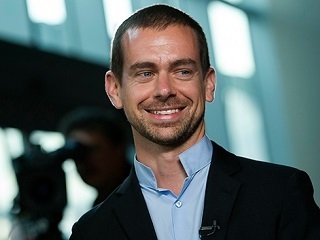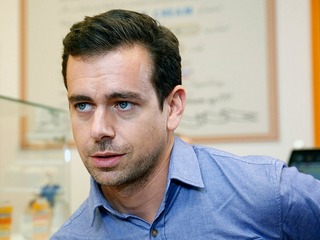Oxford Cancer Analytics raises $11M to detect lung cancer via a blood test
OXcan combines proteomics and artificial intelligence for early detection
Read more...
Today the big news came down that Jack Dorsey had been give the position of permanent CEO of Twitter, after three months of interim status. As most people who care about Twitter know, Dorsey is just returning to his previous role. He was CEO of Twitter for its first two years, before stepping down in October of 2008.
A founder running his company, stepping down and then returning is actually not as rare as you might think. There are even three others who did it this year: Mark Pincus at Zynga, Sean Rad at Tinder and Steve Huffman at Reddit.
Since none of those others have been back on the job for all that long, no more than six months at most, it would actually be better to go back and look at some other faces who returned to rescue their companies, and what Dorsey can possibly learn from their tenures.

The most famous example of a founder losing his job, then returning like a phoenix, rising from the ashes to take his company to new heights is Steve Jobs.
The man who will soon have his biopic coming out, was famously kicked out in 1985. He went on to start another company, called NeXT, and to help create and run Pixar, came back in 1997 when Apple bought NeXT for $427 million.
You know what happened after that: the company suddenly, after years in the wilderness, became profitable and hip again, thanks to the iMac. Then came iTunes, the iPod, the iPhone, the iPad and now the Apple Watch. Apple is currently the most profitable company in history. It was also successfully handed off to Tim Cook, when Jobs passed in 2011.
When Jobs, Apple's stock was trading at $15 a share. When Jobs returned in 1997, Apple's stock price was around $23.5. A year later it was at $34 a share. By the time Cook took over it was $380 per share.
It's pretty much a success story like no other, though it does give hope to all founders that, they too, are what their company really needs to become all it can be.

Another success story is Larry Page.
Though not techincally a returning CEO, since he never held that title early on, he did run Google, along with co-founder Sergey Brin, from 1995 to 2001, when Eric Schmidt became the first official CEO of the company.
Schmidt took the company public in 2004, at an IPO price of $85. It was announced at the beginning of 2011 that Page would took over, and when he did so on April 4, the price was all the way up to $587 a share. A year later it was at $635 a share.
Now known as Alphabet, with Google under that umbrella, the company is worth $671 a share.
This is another example that should give Dorsey some confidence that he can lead Twitter to the next stage.

One CEO that found very hard to stay away was Michael Dell, and his return happened to coincide with the rise of mobile and tablets, and the decline of the PC.
He ran his company from 1984 to 2004, taking it public in 1988 at an $8.50 IPO price. By the time he stepped down, the stock was hovering around $35 a share.
Dell came back less than three years later, in January of 2007. By then the stock had slipped to under $24 a share.
In 2013, with Dell's stock price at around $13 a share, Michael Dell and Silver Lake Partners, aided by a $2 billion loan from Microsoft, bought the public shares at $13.65 a piece and took the company private again. It came off the market on March 29, 2013, trading at $14.33 a share.
The lesson that Dorsey can take from Dell is that, rather than see what was coming, he allowed his company to fall behind the times. Twitter is struggling right now in terms of getting new users, so staying ahead of the curve is important for Twitter to not fall behind for good.

Not every returning CEO even seems to really want the job again.
Take Reid Hoffman for example. He founded LinkedIn in 2003, and was its CEO for its four years. By the time be left in 2007, the company had more than nine million members. His replacement was Dan Nye
Nye did not last long, as he stumbled and Hoffman returned in December 2008, until Jeff Weiner took over in June 2009. He has been CEO ever since, and took the company public in 2011.
There likely isn't too much Dorsey could learn from this situation, since Hoffman was likely a temporary replacement until a new CEO could be found.

One founder that Dorsey has to be happy he is not emulating is Rob Kalin, who co-founded Etsy in 2005. He was CEO until July 2008, with Maria Thomas taking over, before he returned in 2009. He was then pushed out in 2011, over concerns he couldn't grow the company. Then-CTO Chad Dickerson took over, and took the company public earlier this year.
By the time Etsy had its IPO, Kalin only owned 1% of the company. By contrast, when Twitter went public in 2013, Dorsey owned 4.9% of the company, or 23.4 millon shares. That gave him a total of $1.06 billion. And he has now been welcomes back with open arms.
(Image source: memegenerator.net)
OXcan combines proteomics and artificial intelligence for early detection
Read more...Nearly $265B in claims are denied every year because of the way they're coded
Read more...Most expect to see revenue rise, while also embracing technologies like generative AI
Read more...




